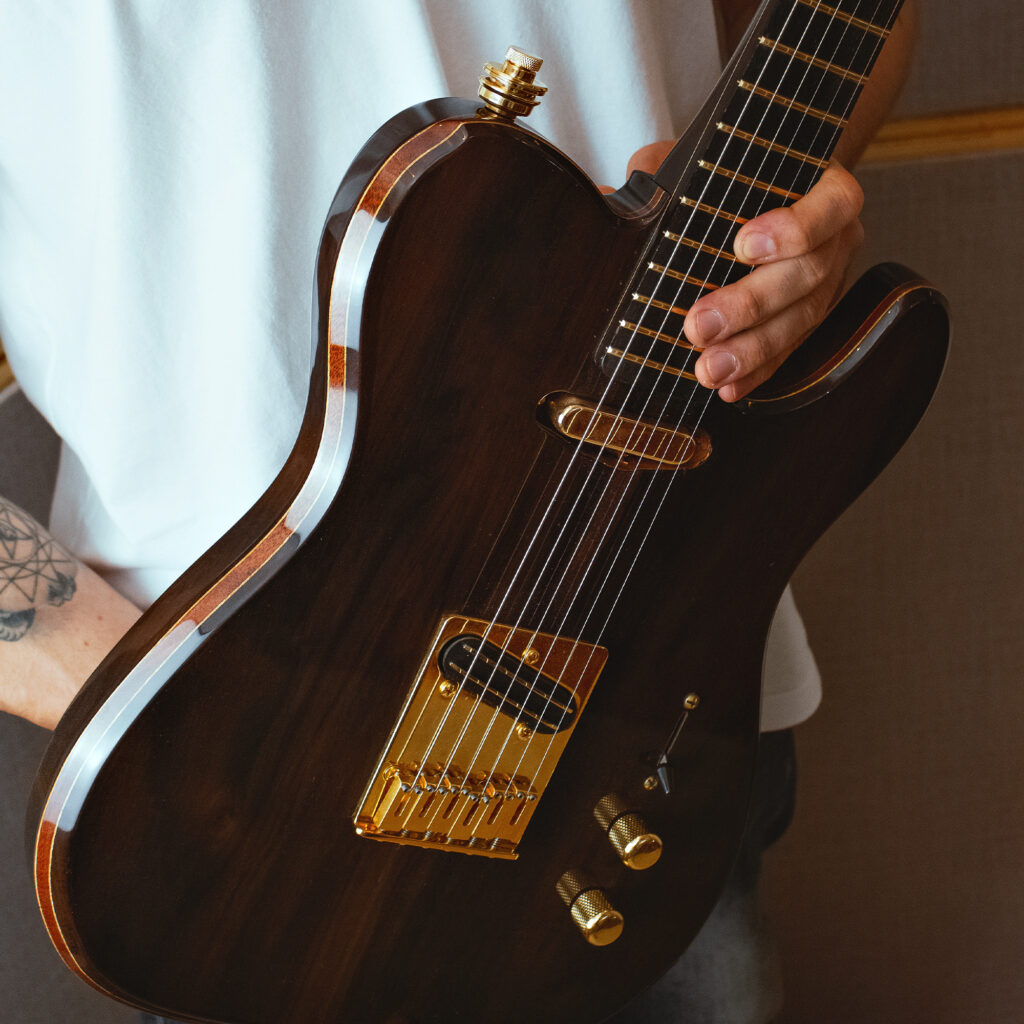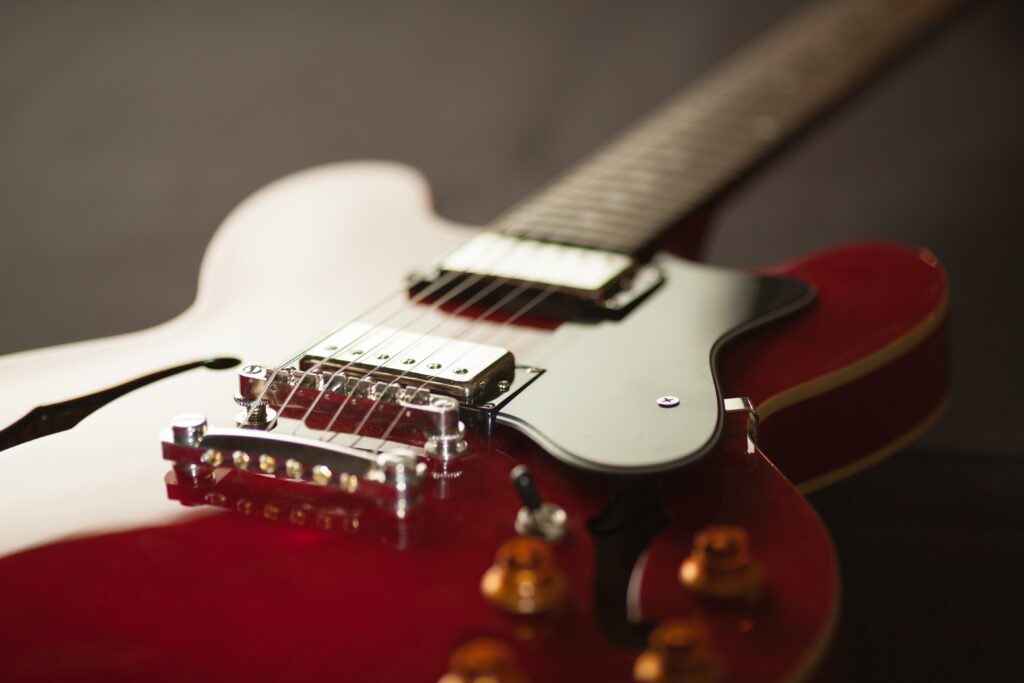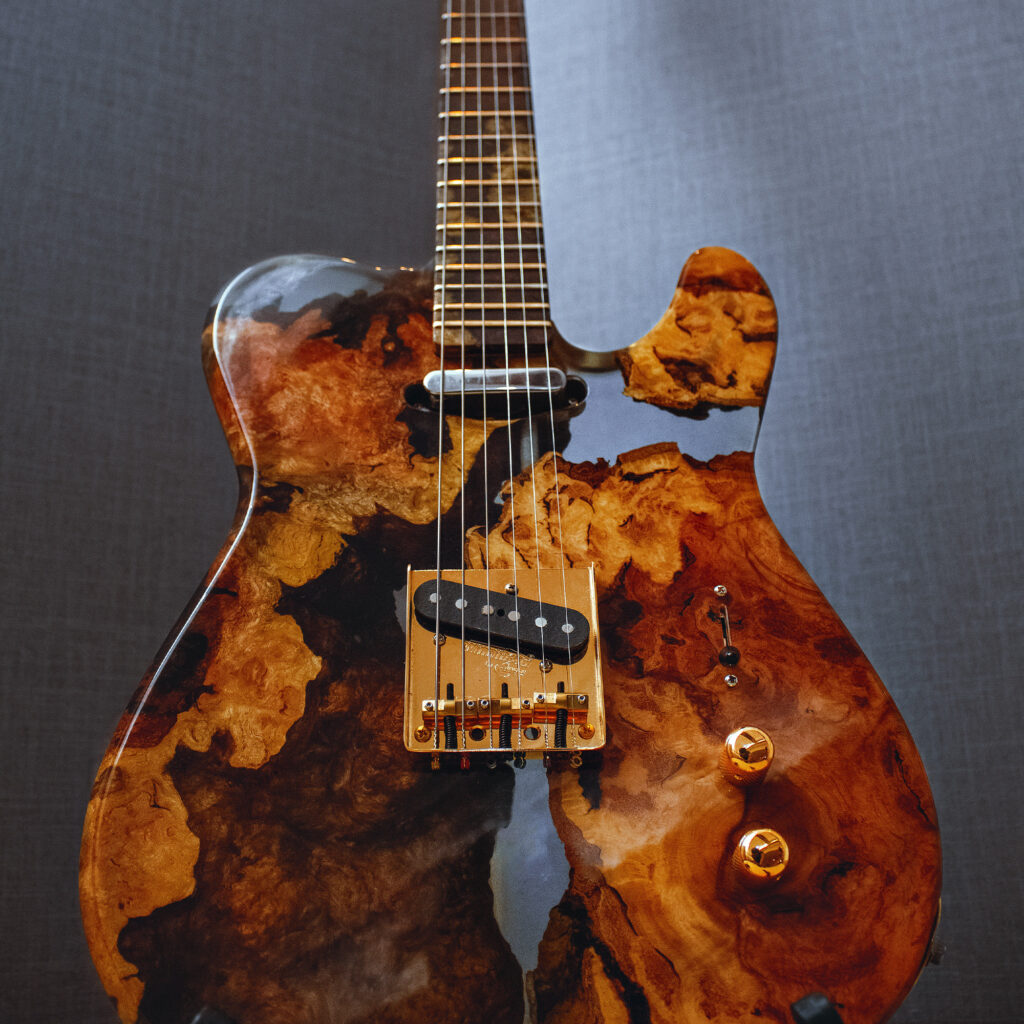Are you looking to expand your musical repertoire? Have you come across the mysterious Baritone guitar and wondered what it is, exactly? Well, if you’re curious to know more about this intriguing instrument, then you’ve come to the right place!
In this blog post, we strive to help aspiring guitarists learn all they need to know – so join us as we explore the world of Baritone guitars.
We’ll take a look at their history, design characteristics, recommended playing techniques, and much more. So grab your favorite six-string and let’s dive into what makes a Baritone guitar so special!
Where did the baritone guitar come from?
The Baritone guitar is a relatively recent addition to the family of string instruments, having been developed in the mid-20th century.
While its exact origin is unclear, it has been suggested that the instrument was developed as a way of producing deeper tones than could be achieved with traditional guitars. This led to the design of a longer scale length and thicker strings than those found on standard guitars, giving it the unique sound we now know and love today.
The first commercially successful Baritone guitar was introduced by Gibson in 1953 – it featured an extended fretboard range and a distinct sound that combined powerful low notes with bright highs. From then on, various brands have created variations of this classic instrument, each borrowing elements from its iconic design while adding their innovations.
Over time, many renowned players have adopted and popularized this special type of guitar – Ed O’Brien, J Mascis, and Tom Waits are just some examples of musicians who have helped make the Baritone guitar an integral part of modern music production.
Today, baritones can be found in many genres such as jazz, blues, and rock n’ roll – thanks to their versatility and unique tonal characteristics it is an indispensable tool for any musician looking to craft deep sounds with layers of complexity and texture.
What are the characteristics of A baritone guitar?
The Baritone guitar is known for having a longer scale length and thicker strings than standard guitars. The typical Baritone guitar has a scale length of 27” – 29”, which is much longer than the more common 25.5” – 26.25” of most electric and acoustic guitars.
As such, the Baritone’s lower strings have to be tuned to a lower pitch to produce sounds that are in tune with other instruments. Coupled with its thick strings, this makes it possible for players to create deep, fat tones that can be used to add interesting textures and subtleties to music arrangements.
Furthermore, many Baritone guitars feature an extended fretboard range as compared to their standard guitar counterparts, allowing players to access notes that they otherwise wouldn’t be able to. This extended range can add a whole new dimension of creativity and expression to an artist’s playing style.
In addition, Baritone guitars are typically constructed with larger bodies than standard guitars – this helps to produce a fuller sound that is well-suited for both rhythm and lead roles.
Finally, due to their longer scale length and thicker strings, Baritone guitars also require heavier gauge picks to prevent string breakage when strumming or picking aggressively.
These characteristics make the Baritone guitar a versatile instrument capable of producing unique tones and sounds that cannot easily be replicated on other types of guitars.
| Category | Baritone Guitar |
|---|---|
| Definition | A type of guitar that is designed to produce lower-pitched notes than a regular guitar. Typically, the scale length is longer and the tuning is lower. |
| Size | Larger than a regular guitar, but smaller than a bass guitar. Typically, the scale length is around 27-29 inches. |
| Tuning | Typically, the tuning is lower than a regular guitar. The most common tuning is B to B (a fourth or fifth lower than standard guitar tuning). However, some baritone guitars can be tuned even lower, such as A to A or G to G. |
| Sound | Produces a deeper, richer tone than a regular guitar due to the longer scale length and lower tuning. It is often used in genres such as metal, jazz, and country. |
| Playing Style | Can be played with either a pick or fingers. Due to the larger size and lower tuning, it may require some adjustment to the playing technique. |
How do you play a baritone guitar?
Playing a Baritone guitar takes some getting used to, as the thicker strings and longer scale length can take some time to get used to.
To start, it’s important to understand the tuning of a Baritone guitar – depending on the model, this may vary from E-A-D-G-B-E (the same as most standard guitars) to B-F#-B-E-A-D.
It is also important to note that due to the thickness of the strings, using lighter gauge picks may result in string breakage when playing aggressively.
Once you are comfortable with the tuning of your Baritone guitar and have chosen an appropriate pick for your playing style, it is time to start exploring its unique sound capabilities.
The extended range of notes available on many Baritone models allows players to explore interesting melodic ideas and experiment with progressions they wouldn’t be able to access on a standard guitar. This makes them especially suited for creating thick rhythms and powerful leads. This makes the Baritone ideal for adding depth and complexity to rhythm sections or creating stunning lead melodies full of character.
It is also important for aspiring players to practice different strumming techniques with their Baritone guitar to unlock its potential – as many lead players have discovered over time, alternating between thumb strums, downstrokes, and upstrokes can give your soloing an extra boost!
Can you play normal chords on baritone guitar?
Yes, you can play normal chords on a Baritone guitar. The extended fretboard range of many Baritone models makes it possible to access the same notes and chord shapes that are available on a standard guitar.
However, due to the size of the strings and longer scale length, some adjustments may be necessary to get the chords to sound clear.
Due to the larger string size, it is recommended that players use heavier gauge picks when playing their Baritone guitar. This helps prevent string breakage when strumming or picking aggressively, as well as ensures that each note is articulated clearly.
Furthermore, when forming chords, players need to press down firmly on each string to ensure that all notes within the chord have been sounded correctly.
Additionally, players will also need to consider what tuning they are using when playing their Baritone guitar – depending on the model, this may vary from E-A-D-G-B-E (the same as most standard guitars) to B-F#-B-E-A-D. As such, some chords may require alternative fingerings to be played properly in different tunings.
Overall, although it takes some getting used to at first – with practice and experimentation – players can learn how to effectively play and use normal chords on their Baritone guitars to create unique and interesting musical arrangements full of depth and complexity!
Can you play a baritone guitar in standard tuning?
It is possible to play a baritone guitar in standard tuning. The string gauge on a baritone guitar may be greater than that of a standard guitar, but the specific strings and tuning will depend on the model.
The longer scale length of a baritone guitar gives it the ability to access lower notes compared to a standard guitar. This means that players may need to adjust their technique to get the most out of their instrument.
Generally, when playing in standard tuning on a Baritone guitar, the lowest string is tuned to E, followed by A, D, G, B, and finally E for the highest pitch.
Although this is similar to that of a standard electric or acoustic guitar, due to the Baritone’s longer scale length and thicker strings some adjustments may be necessary for chords and melodies to sound clearly.
For instance, due to the thickness of its strings, it is recommended that players use heavier gauge picks when playing their Baritone guitars to prevent any string breakage when strumming or picking aggressively.
Furthermore, when forming chords players need to press down firmly on each note within them so as not to mute any tones unintentionally.
Do baritone guitars need special strings?
Baritone guitars require strings that are thicker and heavier than those used on conventional electric or acoustic guitars. This is due to the longer scale length of the Baritone and its lower tuning, which require thicker strings to produce sounds in tune with other instruments.
As such, aspiring players need to purchase strings specifically designed for Baritone guitars to avoid string breakage when strumming or picking aggressively. Furthermore, heavier gauge strings help to produce a full, rich tone that has become synonymous with this special type of guitar.
Additionally, due to the nature of the instrument’s design and string thickness, different playing techniques such as fingerpicking or hybrid picking may be required to achieve certain tones and textures.
All of these elements combined make it essential for any aspiring guitarist using a Baritone guitar to use specially designed strings that have been tailored to suit its unique characteristics.
Who uses a baritone guitar?
I love listening to songs and sounds that use the baritone guitar. I’ve seen popular guitarists who use the baritone guitar to release their songs throughout history. These famous guitarists include John Petrucci, Duane Eddy, Don Rose, and Breaking Benjamin. In addition, I found the baritone guitar in songs such as Liquid Blue (Andy McKee), Rock Lobster (The B-52s), Minerva (Deftones), These Walls (Dream Theater), and Red Cold River (Breaking Benjamin).
What to consider when purchasing a Baritone guitar?
Once going through this write-up, you might want to purchase a baritone guitar. I know that some baritone guitars are suited to textural or ambient sounds. However, some are crunchy and twangy. I can’t come up with any particular instrument that can fit these paradigms because you have ESPs with Black Winters, Danelectro baritones, and the Gretschs.
Therefore, I will be inconsiderate and insincere in creating a buying formula for anyone who wants to buy a baritone guitar. Nevertheless, I recommend you list features you want to buy in a baritone guitar before hitting the market. However, you need to know what is a baritone guitar before you can understand what to find in a good baritone guitar.
Concluding Thoughts
In conclusion, the Baritone guitar is an incredibly versatile instrument that can be used to create a variety of sounds and textures.
Its extended fretboard range and thicker strings allow players to access notes they wouldn’t otherwise be able to on standard guitars, while its larger body size produces a fuller sound well-suited for both rhythm and lead roles.
With practice and experimentation, aspiring musicians can learn how to effectively play chords on their baritones to craft unique musical arrangements full of depth and complexity.
All these elements combined make it essential for any guitarist using a Baritone guitar to use specially designed strings that have been tailored specifically for this special type of instrument.





